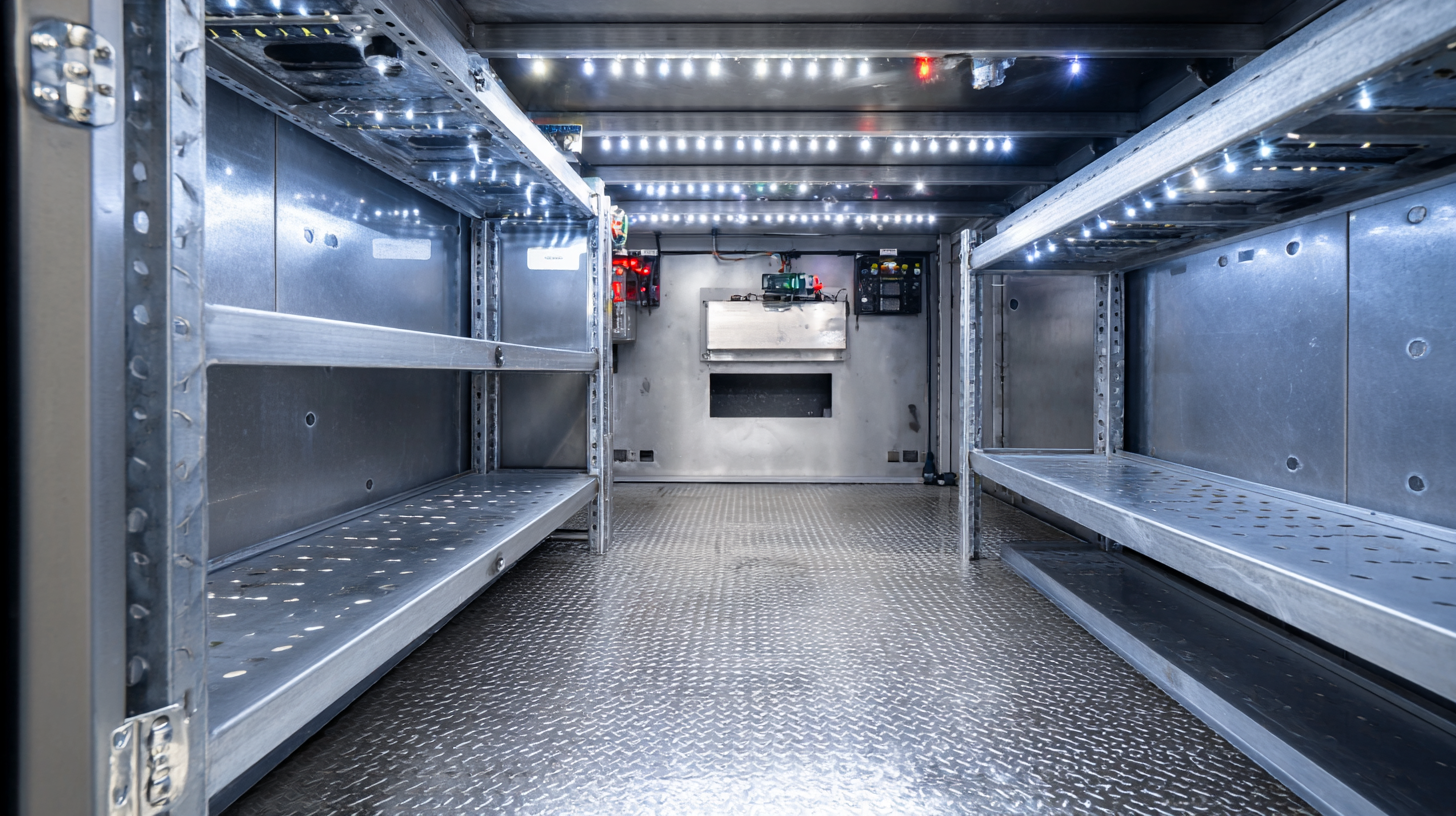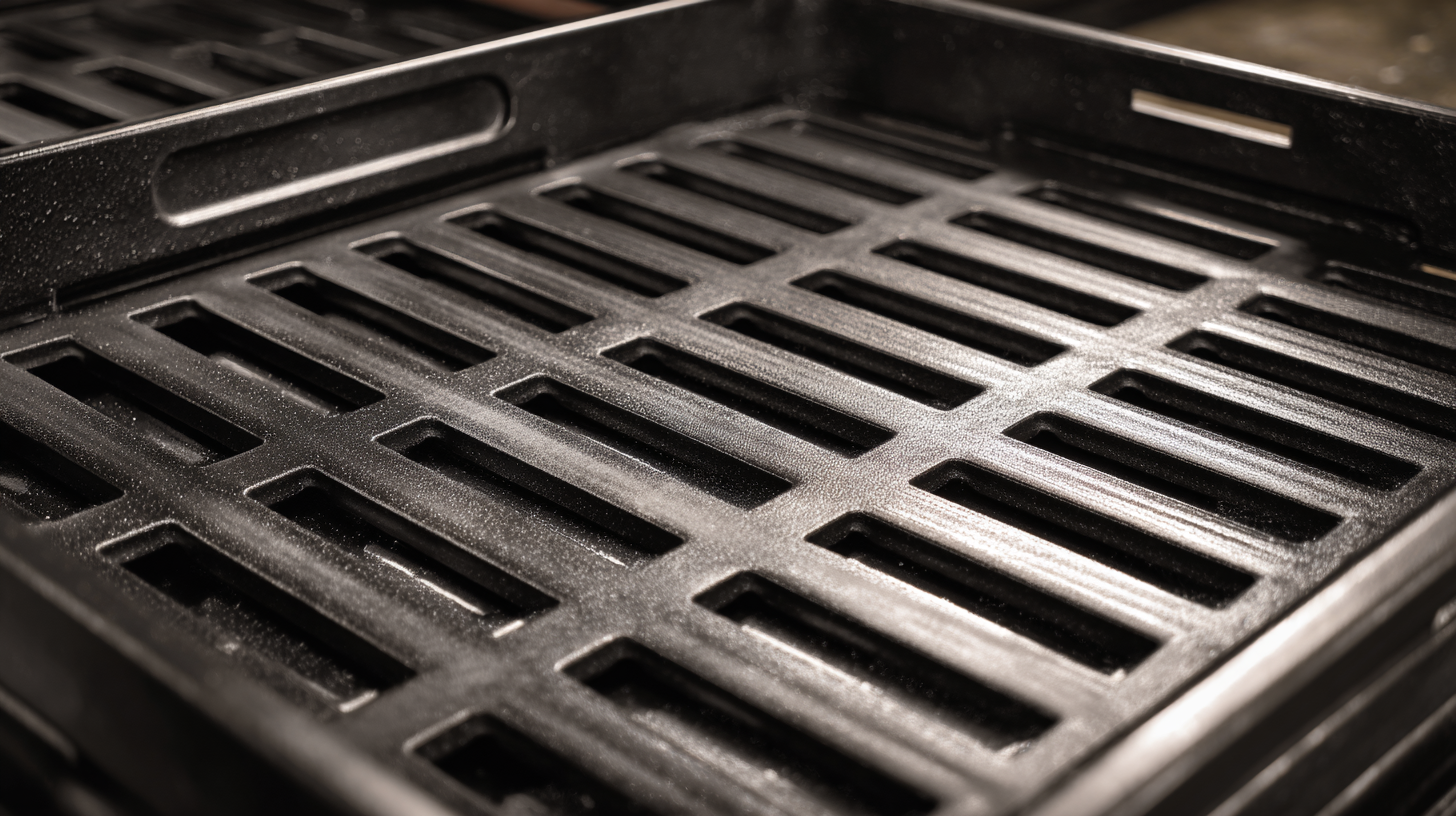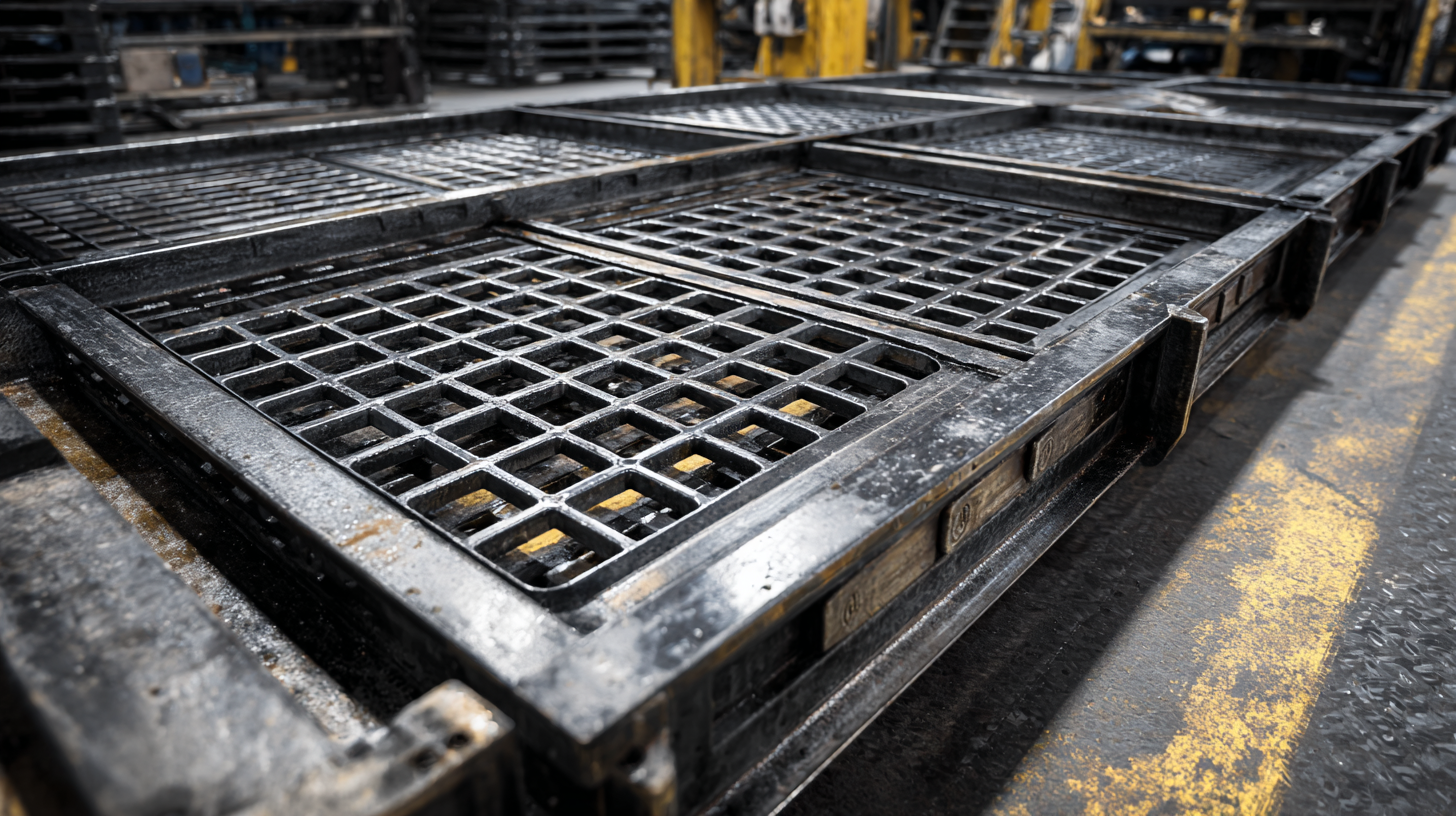The Ultimate Guide to Choosing the Best Industrial Drip Tray for Your Business Needs
In the fast-paced world of industrial operations, maintaining a clean and safe work environment is paramount. One essential component in achieving this goal is the use of an industrial drip tray, which plays a crucial role in containing spills and leaks from various equipment. However, with a plethora of options available in the market, choosing the best industrial drip tray tailored to your specific business needs can be quite a challenge.

This ultimate guide seeks to simplify the decision-making process by comparing different types of industrial drip trays based on key factors such as material, size, capacity, and design. By understanding these critical differences, businesses can ensure they select the right solution that not only meets their operational requirements but also complies with safety regulations, ultimately contributing to a more efficient and hazard-free workplace.
Importance of Drip Trays in Industrial Settings: Protecting Your Business Environment
 In industrial settings, the importance of drip trays cannot be overstated. These versatile tools are essential for managing spills and leaks from various operations, helping to safeguard both the workplace environment and the surrounding areas. By capturing fluids that might otherwise seep into floor drains or contaminate soil, drip trays play a critical role in maintaining compliance with environmental regulations and preventing costly clean-up efforts.
In industrial settings, the importance of drip trays cannot be overstated. These versatile tools are essential for managing spills and leaks from various operations, helping to safeguard both the workplace environment and the surrounding areas. By capturing fluids that might otherwise seep into floor drains or contaminate soil, drip trays play a critical role in maintaining compliance with environmental regulations and preventing costly clean-up efforts.
Moreover, the use of drip trays enhances workplace safety. By minimizing slip hazards caused by spilled liquids, they contribute to a safer operational space, which is vital in busy industrial environments. They not only protect employees from potential accidents but also ensure that machinery and equipment are kept free from hazardous substances, ultimately promoting longevity and efficiency in operations. Investing in appropriate drip trays tailored to specific business needs is an essential step for professionals looking to secure their industrial sites against the risks associated with spills and leaks.
Key Features to Consider When Selecting Industrial Drip Trays
When selecting the right industrial drip tray for your business, it’s essential to consider several key features that will enhance safety and efficiency. First and foremost, the material of the drip tray is crucial; high-density polyethylene (HDPE) and steel are among the most recommended materials due to their durability and resistance to corrosion. According to a report by the Frost & Sullivan Research Group, industries using HDPE trays noted a 30% reduction in chemical spills, highlighting the importance of material selection in maintaining a safe work environment.
Another critical factor is the size and capacity of the drip tray. The Environmental Protection Agency (EPA) mandates specific containment volumes to comply with safety regulations, meaning that choosing a tray with adequate capacity is non-negotiable. For example, trays designed for holding 55-gallon drums can efficiently manage potential spills, thus minimizing environmental impact. A study conducted by the National Safety Council revealed that businesses with properly sized containment systems experienced a 50% decrease in hazardous material incidents, demonstrating the direct correlation between appropriate drip tray selection and operational safety.
Lastly, portability and ease of maintenance should not be overlooked. Drip trays that feature ergonomic designs and lightweight materials facilitate easier handling, which is essential for industries that frequently relocate equipment. Reports indicate that businesses implementing portable solutions saw a 40% increase in operational flexibility. Therefore, evaluating these key features will help ensure the selection of an industrial drip tray tailored to your business needs, enhancing safety and compliance in your operational processes.
The Ultimate Guide to Choosing the Best Industrial Drip Tray for Your Business Needs - Key Features to Consider When Selecting Industrial Drip Trays
| Feature | Description | Importance | Recommended Size |
|---|---|---|---|
| Material | Durable materials like polyethylene or metal are preferred for corrosion resistance. | High | Varies based on application |
| Size | Select sizes based on the volume of liquids to be collected. | High | 30x30 inches or larger |
| Weight Capacity | Must support the expected weight load of liquids and equipment. | Medium | Up to 2000 lbs or more |
| Compliance Standards | Ensure trays meet local regulations for spill containment. | High | N/A |
| Drainage Options | Consider trays with built-in drainage systems for easy liquid removal. | Medium | N/A |
Material Choices: Evaluating Durability and Chemical Resistance
When selecting an industrial drip tray, material choice is critical, particularly in evaluating durability and chemical resistance. Reports indicate that materials like polyethylene and polypropylene are among the most commonly used due to their robust chemical resistance. Polyethylene, for example, can withstand a wide range of chemicals, making it suitable for environments where hazardous substances are handled. According to a study by the American Society of Mechanical Engineers (ASME), polyethylene drip trays can endure significant wear and tear, maintaining structural integrity even under prolonged exposure to corrosive agents.
In contrast, for applications that involve higher temperatures or more aggressive chemicals, stainless steel options may be preferable. A recent industry report highlighted that stainless steel drip trays exhibit superior durability, showcasing a tensile strength of up to 215 MPa, far exceeding that of plastic alternatives. However, cost considerations are equally important; while stainless steel provides excellent longevity and performance, it can be 2-3 times more expensive than its plastic counterparts. Therefore, businesses must balance their operational needs with budget constraints, ensuring they select a drip tray material that offers the best combination of durability and chemical resistance for their specific applications.
Customizing Your Drip Tray: Tailoring Solutions to Specific Business Needs
When it comes to selecting an industrial drip tray, customization is key to meeting your specific business needs. A standardized solution may not address unique challenges such as varying spill types, floor layouts, or environmental constraints. Tailoring your drip tray can provide better efficiency and compliance with regulations, ensuring that your operations run smoothly while avoiding costly incidents.
**Tip 1:** Assess the size and shape of your workspace before choosing a drip tray. Industries have varying requirements based on equipment placement and workflow. Measuring available space will help you decide if you need a compact drip tray or a larger model to accommodate your operations effectively.
**Tip 2:** Consider the materials of construction. Depending on the types of fluids you handle—be it oil, water, or chemicals—the drip tray's material should resist corrosion and be easy to clean. Opt for high-quality resin or metal options that can withstand harsh environments while providing longevity.
Customization not only enhances safety but also contributes to operational efficiency. By understanding your unique requirements and implementing the right features, you can significantly reduce the risks associated with spills and leaks tailored to your business needs.

Cost-Effectiveness and Longevity: Investing in Quality Industrial Drip Trays
When selecting industrial drip trays, cost-effectiveness and longevity are crucial factors that can significantly impact your business operations. Investing in high-quality drip trays not only reduces the risk of spills and contamination but also minimizes maintenance costs over time. Cheaper options may appear appealing initially, but they often require frequent replacements and can lead to costly cleanup efforts in case of leakage. Therefore, opting for durable and reliable trays is a strategic decision that pays off in the long run.
Moreover, quality industrial drip trays are designed to withstand harsh industrial environments, ensuring they maintain their functionality even under extreme conditions. Features such as corrosion resistance and UV protection extend their lifespan, making them a wise investment. By choosing trays made from robust materials, businesses can enjoy peace of mind knowing their investment will endure wear and tear, reducing the need for frequent purchases. Ultimately, prioritizing cost-effectiveness and longevity in drip trays not only enhances operational efficiency but also supports overall sustainability efforts within your organization.